There’s a wonderful quote by the great Carmelite foundress, mystic, and saint, Teresa of Avila, in her autobiography which says: “Life is spent in an uncomfortable inn.” That Teresa and most, if not all the saints, experienced this should be a comforting reassurance for you and me, particularly at this time of unsettledness and confusion in our nation and in the Church.
It so happens that we celebrate the feast of All Saints on Tuesday of this week, providing a perfect background for our reflection on Matthew’s Gospel passage today (23:1-12). One of the Church’s seven principal feasts, All Saints Day honors all the saints, or holy ones, known and unknown. Its originated as early as the 4th century, when Christians began to honor notably holy people, particularly martyrs, witnesses to the Christian faith. In the 7th century, the Western Emperor, Phocas, gave the ancient Pantheon, a temple to all the pagan gods, and which was and still is located on the Piazza della Rotunda in Rome, to the Church. Pope Boniface IV consecrated it, dedicating it to “Santa Maria della Rotunda” and all the martyrs. Eventually, the feast was fixed on November 1 for the entire Church. Thomas Cranmer, author of the Book of Common Prayer in 1549, retained in the calendar only those feasts of saints mentioned in the New Testament, as well as this feast of All Saints.
The Church is holy not only because a few of her members are held up as saints, but because each and all of us who are the Church are called to be channels of God’s holiness, life, and presence to one another. Recall the Genesis story, where the Creator is described as pausing over each created thing and being, and observing: “It is good.” God, source of all being, goodness, beauty, wholeness, and therefore, holiness, puts a stamp of approval, a stamp of holiness, on all of creation. Holiness or sanctity doesn’t come from a person’s own heroism or efforts, but from the fact that s/he is “gifted”, graced, with God’s own life and motivated by God to share God’s life and presence with others. Holiness, therefore, is an ideal, but a realizable ideal, meant to help build up the Church and, indeed, all of human society. It’s not just for a few select souls, but for all of us. Despite our being sinners before God, Jesus nevertheless says: “I come not to call the righteous, but sinners.”
Through Baptism into Christ, holiness becomes part of our spiritual DNA. Plunged into the very life of God, which is love and service, we’re one-ed to God and to one another. Jesus is the unique pattern and model for humankind, living as the Holy One who loved God to the point of identification, and loved others as a servant, attending to their pain, hunger and need. None of us has the luxury of saying: “But being a saint, being holy, isn’t for me -- it may be for the canonized saints, but surely not for me.” That’s an evasion of one’s baptismal commitment. It’s never a question of “worthiness”, but of willingness: willingness to deliberately commit oneself in love to God, and willingness to commit oneself to the service of one’s sisters and brothers.
Saints aren’t just select heroes chosen by the Church, but all of us who’ve been reborn in Jesus and His Spirit through Baptism, and who take seriously the pledge we’ve made to follow Jesus. In that covenant we declare that we’ll resist evil, and return to the Lord when our weakness and selfishness overcome our resolve. More importantly, we pledge to proclaim the Good News of God in Christ by what we say and by what we do each day. We agree to seek and serve God in all people, to love them as we love ourselves. In the cause of justice and peace, we agree to respect every person’s dignity. Dom Hélder Camara, late Brazilian Archbishop, summed it up this way:
“...Let no one be scandalized if I frequent
Those who are considered unworthy
Or sinful. Who is not a sinner?
Let no one be alarmed if I am seen
With compromised and dangerous people,
On the left or the right,
Let no one bind me to a group.
My door, my heart, must be open
To everyone, absolutely everyone.
Lesbia Scott composed the popular “saints” hymn, #293 in our Hymnal, I Sing a Song of the Saints of God, along with other children’s hymns, which she sang to her own children in the 1920’s. It caught on in the U.S. during the 1940’s, particularly after it was set to a new tune by a retired Episcopal priest, The Rev. John Henry Hopkins, Jr. Her hymn celebrates the kind of holy people, “saints”, whom you and I run into all the time. It gives just a sampling of a veritable catalog of folks who continually inspire us to become more “holy” as well as more “whole” in our lives: doctors and nurses, farmers and field workers, soldiers, martyrs, school students, seafarers and fisher folk, church workers, train operators, taxi drivers and passengers, shopkeepers, even priests; people who not only serve tea, but Starbucks barristas, restaurant wait, cooking and cleaning staff, bosses and co-workers, teachers and fellow students, neighbors and friends. The thing which we all have in common, as the hymn notes, is that they’re “just folks like me” and you.
To become holy means to become whole, integrated, communal, as human persons and as followers of Jesus. Though that is a lifetime project, and a costly one at that, none of us can weasel out of it. Jesus has pledged to all of us who “labor”: “I will give you rest.” Jesus renews that promise to you and me each time we come forward, hands outstretched, to share his Body and Blood in the Eucharist: the “communion of saints”.
Perhaps the key sentence in Matthew’s Gospel today is the one where Jesus says: “The greatest among you will be your servant…” It’s a really important message during this important time of transition in the Church’s life. What Jesus is talking about in the sentence quoted is servant leadership. Speaking from my own 25 years of experience in my own Diocese, especially in mutual parish ministry in several churches, servant leadership isn’t something new in the Church. Nevertheless, it’s taken many folks a while to absorb exactly what the Book of Common Prayer is saying in the Outline of Faith (p. 855): “Who are the ministers of the Church? The ministers of the Church are lay persons, bishops, priests, and deacons. What is the ministry of the laity? The ministry of lay persons is to represent [re-present] Christ and his Church; to bear witness [martyr] to him wherever they may be; and, according to the gifts given them, to carry on Christ’s work of reconciliation in the world; and to take their place in the life, worship, and governance of the Church…”
Please note that phrase: “...according to the gifts given them…” “Servant leader” doesn’t mean that every single member is called to be a Senior Warden, or the director of the Altar Guild, or a Convention delegate, or a Church School teacher. But every member is called to be a servant leader, “according to the gifts given them”. The very best way in which one can be a true minister in one’s local community of faith is, as Jesus recommends, to be willing to serve, according to the gifts given to you.
I was totally amazed when I Googled “Servant Leadership” and found how widespread this concept has been and is, not only in the Church, but in the secular, particularly business and management, sector of the world for some time now. Robert K. Greenleaf (1904-1990), who formally coined and defined the words “servant leadership” in the secular setting, lists 10 characteristics which describe a servant leader:
- Listening: not just hearing, but actively listening; paying attention to others’ unspoken needs; supporting others in decisions.
- Empathy: putting oneself in the others’ shoes, so to speak; trying to understand their point of view; respecting and appreciating others.
- Healing: attending to both one’s self and others; helping to resolve conflict in ways that educate and help others grow and mature; utilizing humor and fun, and creating an atmosphere free of the fear of failure.
- Awareness: again, both of oneself and others; really “being there” when communicating with others.
- Persuasion: not by exerting power, status, or rank, but influencing others by being clear, speaking from conviction, and by reasoning together.
- Conceptualization: thinking “outside the box”; looking with vision beyond day-to-day realities and limits to what can be; setting specific goals and strategies to achieve them.
- Foresight: learning about the past so as to better understand the current reality, and being able to foresee the likely outcome of situations as well as their consequences.
- Stewardship: holding the institution in trust for the greater good of its members and of others in the surrounding society, by advocating for honesty, openness and accountability.
- Commitment to peoples’ growth: recognizing the other’s intrinsic value, beyond simply what they do or can do; encouraging others to nurture their gifts and their spiritual lives; welcoming ideas or input by anyone, and involving others in decision-making through consensus.
- Building community: dedicating oneself to find ways to build an ever stronger community within the institution, as well as trying to develop genuine community within the surrounding society.
“The greatest among you will be your servant…” Undoubtedly, the finest summary of these, Jesus words in the Gospel, in a Christian context, are found in St. Paul’s encouragement to the Ephesian Christian community: “I...beg you to lead a life worthy of the calling to which you have been called, with all humility and gentleness, with patience, bearing with one another in love, making every effort to maintain the unity of the Spirit in the bond of peace…
...Each of us was given grace according to the measure of Christ’s gift...to equip the saints for the work of ministry, for building up of the body of Christ…
...speaking the truth in love, we must grow up in every way into him who is the head, into Christ, from whom the whole body, joined and knit together by every ligament with which it is equipped...promotes the body’s growth in building itself up in love.” (Ephesians 4:1-3; 7; 12; 15-16)
































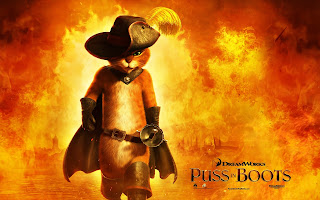
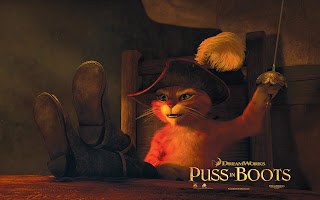

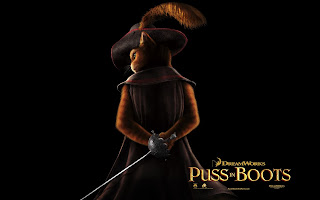

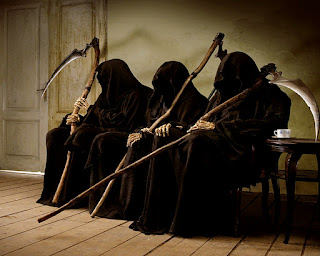
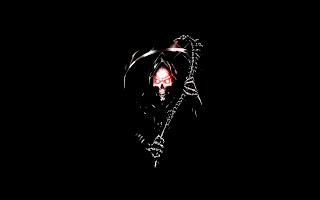










 With only two months' notice and no prizes this time, they still received about 300 cartoons by 127 cartoonists from 41 countries.
With only two months' notice and no prizes this time, they still received about 300 cartoons by 127 cartoonists from 41 countries. Among the artists contributing to the event are Ferhat Demirbaş, Kemal Özyurt, Osman Güral Suroğlu, Erdoğan Başol, Ahmet Ümit Akkoca, Eray Özbek, and Musa Gümüş, from Turkey.
Among the artists contributing to the event are Ferhat Demirbaş, Kemal Özyurt, Osman Güral Suroğlu, Erdoğan Başol, Ahmet Ümit Akkoca, Eray Özbek, and Musa Gümüş, from Turkey. The color catalog consists of 76 pages including the covers and is 18.2 x 25.7 cm in size. The cover cartoon is by John Jensen from UK and has the legend: "I've found our good luck charm. It's not even cracked." (Top above)
The color catalog consists of 76 pages including the covers and is 18.2 x 25.7 cm in size. The cover cartoon is by John Jensen from UK and has the legend: "I've found our good luck charm. It's not even cracked." (Top above) Blogger's Choice: G. M. Sudarta (Indonesia).
Blogger's Choice: G. M. Sudarta (Indonesia).